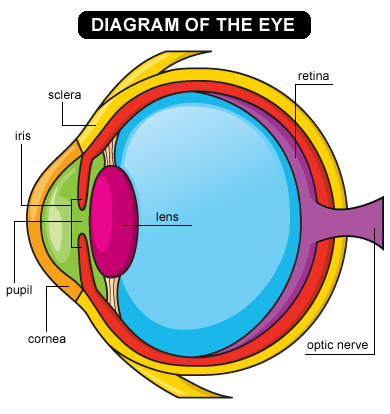Retinopathy of prematurity
Retinopathy of Prematurity (ROP) is a common condition in preterm babies that can sometimes require treatment and if untreated, may lead to blindness.
At King Edward Memorial Hospital (KEMH) and Perth Children’s Hospital (PCH), it is routine to check all preterm babies.ROP affects the developing blood vessels of the retina in the eye. The retina is a delicate, light-sensitive membrane at the back part of the eye and it absorbs information like film does in a camera. It relays this information via the optic nerve to the brain.
When ROP occurs, the tips of the retinal blood vessels grow abnormally and in severe cases they grow into the cavity of the eye and form scar tissue. At first, this scar tissue is at the very edge of the retina and so does not affect vision. If the scarring extends, it may result in blindness.
Mild degrees of ROP (stages one and early stage two) are very common and affected babies recover completely. Severe ROP (stage two ‘plus’ and stage three) is less common. This occurs almost exclusively in babies born extremely preterm - before 30 weeks.
In the last 25 years in Western Australia, fewer than one in 1,000 babies born at less than 32 weeks is visually impaired/blind from ROP.
The main cause of ROP is prematurity. The more premature your baby is, the higher the chance laser treatment may be needed for ROP. Some babies who are never sick develop ROP while others who have been very unwell do not.
Risk factors include the:- gestational age and birthweight
- amount of oxygen circulating in your baby’s blood, which is monitored continuously
- general condition of your baby.
Diagram of the eye

Screening
KEMH/PCH’s screening program facilitates early detection and treatment. This reduces the risk of visual impairment.- All babies under 31weeks and all babies born <1250g
- Your baby will be screened at four weeks of age, but not before 31 weeks corrected gestation.
RetCam imaging
- RetCam imaging is the screening tool used at KEMH to diagnose ROP. Regular RetCam imaging allows medical staff to monitor the development of your baby’s eyes. The images are taken by trained nursing staff and sent to an ophthalmologist for review at PCH.
- The screening process is a short procedure that takes place at your baby’s bedside.
- Eye drops are given before the examination to dilate the pupils and provide local anaesthetic.
- The images are reviewed remotely by the ophthalmologist and reported on within 24 hours.
- Regular screening will continue under instruction by the ophthalmologist.
Treatment
- Most ROP changes heal without treatment as the baby grows.
- Recent research has shown that early treatment for severe ROP reduces long-term visual problems.
- Treatment for severe progressive ROP is by laser therapy to the retina under general anaesthetic. This is performed at PCH by the eye specialist. This treatment aims to restrict the extent of retinal scarring and damage, and minimise the risks of visual impairment in the future.
- Some infants may become short sighted and will require glasses; some may develop “cross-eyes”. Retinal complications such as retinal detachment may also occur which can result in blindness.
- The full details of ROP and its treatment will be discussed with you personally.
- If you require further information, please ask the doctors or nurses caring for your baby.
Outpatient appointments
The follow up of preterm infants continues after discharge. All babies who meet the screening criteria will have follow up appointments at PCH, including those who live outside the metropolitan area.Attendance of these appointments is crucial as untreated ROP can lead to visual impairment or potential blindness.
For queries regarding your outpatient appointment, please call 6456 4033.
DisclaimerThis publication is for general education and information purposes. Contact a qualified healthcare professional for any medical advice needed. © State of Western Australia, Child and Adolescent Health Service Produced by: Neonatology |
This document can be made available in alternative formats on request for a person with a disability.

